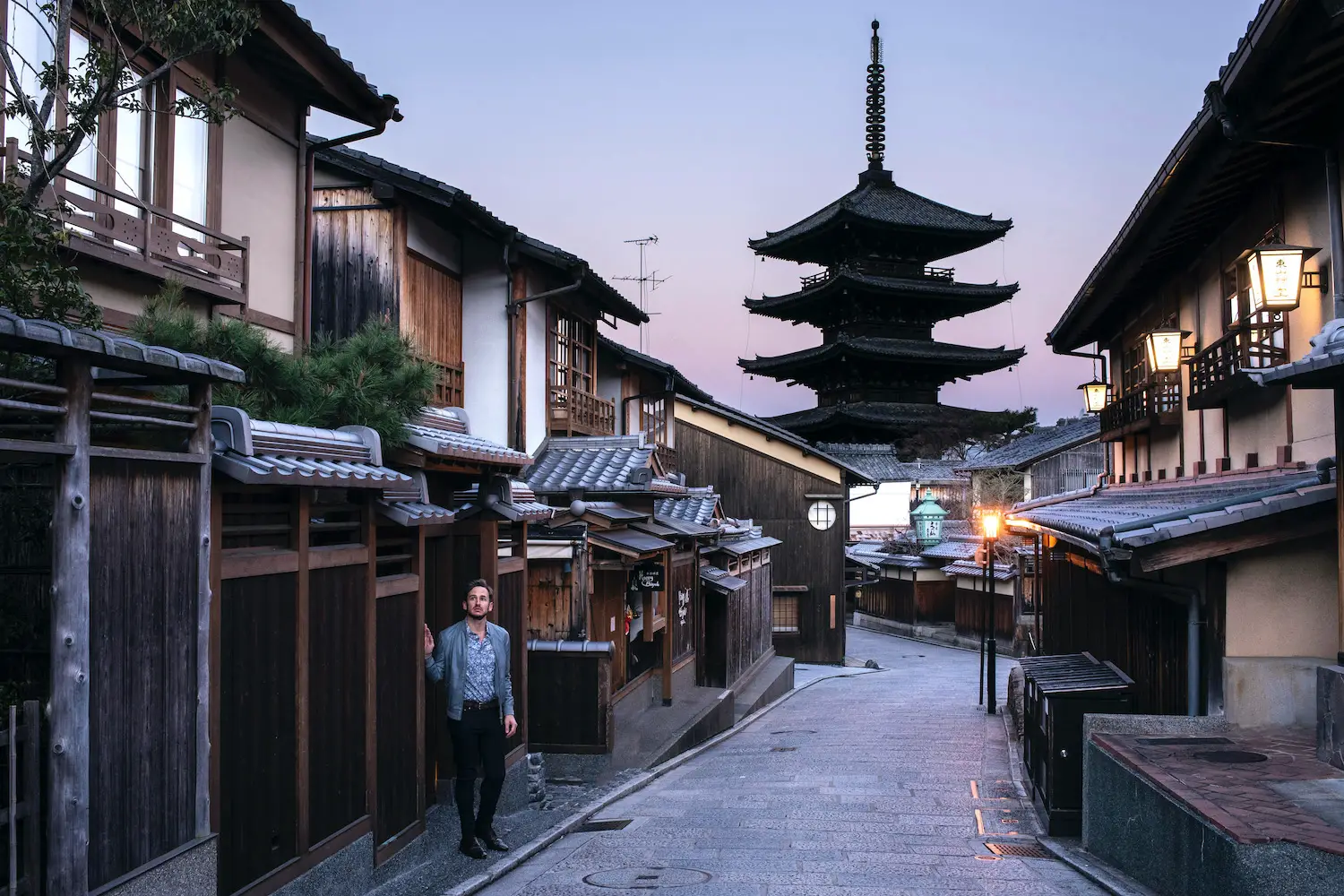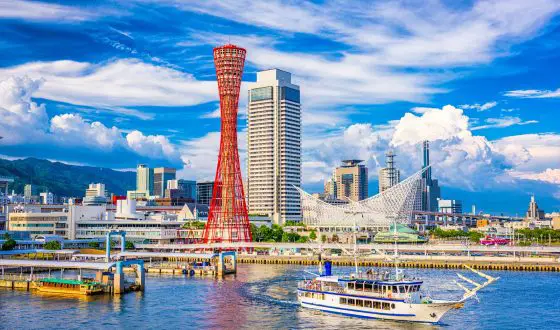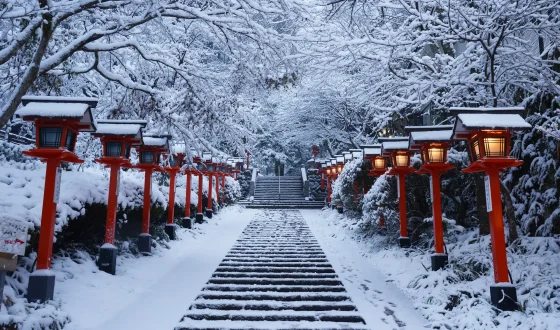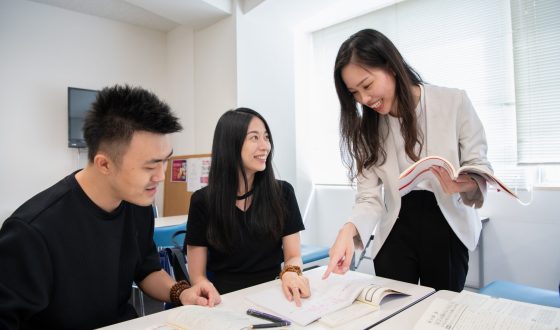How Many Days In Kyoto: Best Kyoto Itinerary Guide
In the past, Kyoto was known as Japan’s capital as well as the Imperial family’s residence. Although Kyoto had gone through a lot of devastation, it thrived under the Tokugawa shogunate and was mostly spared during World War II.
Fortunately, Kyoto’s beautiful wooden structures and Buddhist shrines have survived along with the city’s development. Kyoto possesses distinctive appeals with a harmonious blend of traditional, modern and natural environments.
Kyoto is a must-visit city in your Japan travel itinerary. It has a number of Japan’s most well-known destinations including Fushimi Inari Shrine with unique torii gates, UNESCO World Heritage Sites, an old-fashioned town, and a fantastic bamboo forest.
So, deciding how many days in Kyoto will depend on how many destinations you want to explore in this fascinating city. Follow our suggestions in this article to find the best kyoto itinerary for you.
How Many Days in Kyoto?
Despite not being a large city, Kyoto is home to many wonderful sites to explore. How many days in Kyoto will depend on the number of destinations you would like to see, from a variety of beautiful temples and shrines to lush bamboo forests.
You can spend a week or more in Kyoto to discover the city’s rich cultural features if you really want to have a thorough understanding of the lifestyle and people here.
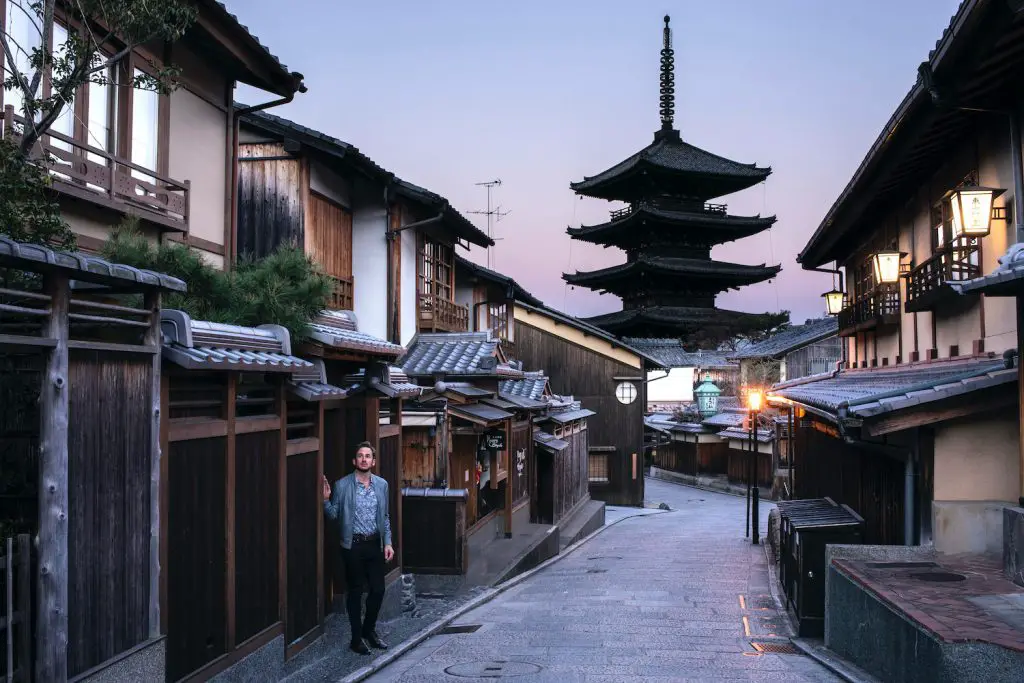
If you just want a short tour of famous places in Kyoto, we recommend a two- to five-day trip. (Source: Internet)
If you just want a short tour of famous places in Kyoto, we recommend a two- to five-day trip. Three days is the best amount of time to spend in Kyoto.
You could use the first day to explore the picturesque areas of eastern Kyoto, which are home to several impressive temples and shrines in Higashiyama district as well as traditional Japanese streets in Gion district.
The second day is ideal for seeing the southern Fushimi Inari Shrine, returning to the city’s center to visit the dispersed attractions, and ending the day with a food tour in the Nishiki market. Spend the final day engaging in exciting activities in Kyoto’s western Arashiyama Bamboo Grove.
Kyoto 3-day Itinerary: A Comprehensive Guide
Day 1
1. Kiyomizu-Dera
Kiyomizu-dera is undoubtedly one of Kyoto’s most popular tourist destinations with its beautiful wooden structure and large observation deck. The magnificent temple complex, which consists of buildings and landscapes, is situated on a hillside amid a lush bamboo tree forest where the foliage turns vivid red in the fall. You can also admire a pure stunning waterfall and many sacred shrines nearby.
2. Kyoto Tatami Starbucks
After visiting Kiyomizu-Dera, stop by the nearby Kyoto Ninenzaka Yasaka Chaya Starbucks and experience the Japanese-style Starbucks on unique tatami (Japanese mats) in a retro atmosphere. The coffee shop is decorated in the elegant style of Japanese tea houses.
The exterior is relatively minimalist and modest, but the interior space with washi paper, wooden furniture, dim lights, and tatami seating will give visitors an unforgettable experience.
3. Kodaiji temple
You’ll find the Kodaiji temple while discovering the Kiyomizu-Dera area. This place is a masterpiece of architecture, yet not many tourists have heard of it. Kodaiji is known as one of the most beautiful temples in Kyoto with fantastic landscapes and gorgeous interiors.
It offers elegant zen gardens that provide a welcoming atmosphere. You can also see the tomb, a bamboo forest, and tea houses, in the temple’s campus.
4. Yasaka shrine
Just a short distance from Kodaiji temple, don’t miss the Yasaka shrine which is decorated with hundreds of unique lanterns that offer a beautiful background for your travel photos. If you visit this place in the evening, you will enjoy the dream-like scenery with lanterns lit up everywhere in the temple.
5. Maruyama park
If you have visited Yasaka Shrine, Maruyama Park should be the next stop on your itinerary. This is a famous park in the Higashiyama Area close to Yasaka Shrine. Whenever the cherry blossoms are in their full glory in early April, the park becomes the city’s most well-liked and busy place for blossom viewing gatherings.
6. Gion
Running along Shijo Avenue, Gion district is impressive with traditional Machiya wooden houses, Japanese-style inns, beautiful tea houses, and many local restaurants. Hanami-koji Street should be the first spot to visit in Gion. This is a bustling street with hundreds of restaurants, tea houses, and souvenir shops along both sides of the street.
Come here and experience traditional Kyoto cuisine (Kaiseki Ryori), attend a tea ceremony, and don’t forget to buy cute wagashi sweets as gifts. This is also an area where you can easily see Geisha and Maiko on the street. If you meet them, be polite and only see them from a distance.
Day 2
1. Fushimi inari shrine
You can find this sacred Fushimi Inari Shrine in the Fushimi district belonging to the southern area of Kyoto. The shrine is famous for its unique interior that features 1,000 vivid red torii gates, which contribute to its immense appeal to tourists. This makes it a fantastic location for photography.
You can also like:
- Japanese Sauna Culture – Why Saunas Are So Popular in Japan
- Things To Do In Ueno: Exciting museums, cherry blossom viewing spot and more
- Best Things To Do In Roppongi: Shopping, Nightlife, Art Museums And More
Hiking up the mountain is another excellent option if you enjoy the outdoors and have a lot of free time to explore the picturesque shrine. The route will take about 2-3 hours to reach the top, there are restaurants along the way to serve visitors.
2. Gekkeikan Okura Sake Museum
Located in Fushimi Sake District, Gekkeikan Okura Sake Museum is a well-known sake maker that was founded at the beginning of the 16th century. Visitors can discover each stage of sake production, the necessary equipment to make it, and learn more about the world of sake in the museum’s smart display rooms. You can also attend a sake tasting at the end of the museum tour.
3. Nishiki market
If you enjoy food, you shouldn’t miss the amazing Nishiki Market in the city’s center. It is an excellent spot to learn about Japanese culture and cuisine and to observe the Japanese people’s daily life.
There are many different eateries, snack stands, and shops where you may buy Japanese cooking tools or some adorable souvenirs. The most enjoyable thing to do at Nishiki Market is strolling along the market and making a Japanese street food tour.
4. Nijo castle
Constructed in 1603, Nijo Castle was known as the home of the shogun Tokugawa Ieyasu during the Edo Period. The castle was recognized as a World Heritage Site by UNESCO in 1994 because of its palace structures, which are undoubtedly the greatest remaining examples of ancient Japanese castle construction.
A typical castle tour might start at the Ninomaru Palace which serves as the shogun’s office when he comes to Kyoto, then visit the Honmaru Palace with its beautiful gardens, and end with seeing the countless flowers blooming in the castle’s campus.
5. Ginkakuji temple
Ginkaku-ji is a beautiful temple located northeast of Kyoto, known by the nickname “Silver Pavilion”. Sadly, the plan to silver the whole temple was never carried out. However, the covered wooden interior gives the place an exquisite and harmonious beauty, boldly traditional Kyoto. Ginkaku-ji possesses lush gardens with breathtaking views, bright paths, and a calming atmosphere, enough to intoxicate anyone who comes here.
6. Philosopher’s Path
This well-liked stone pathway runs along from Nanzenji to Ginkakuji. It was given that name in honor of philosopher Nishida Kitaro who is renowned for his methods of meditation. The road is also a famous cherry blossom viewing spot in Kyoto.
If you travel in the blooming season, you will admire the vibrant and stunning view of the road. It would still be a wonderful place to visit for an enjoyable holiday even if you missed the cherry blossom season.
Day 3
1. Arashiyama Bamboo Grove
Take a walk across Arashiyama Bamboo Grove to kick off your third day in Kyoto. It’s pleasant to stroll along the walkways that wind through the bamboo forest. The tall and long bamboo trees catch the morning sunlight and gently sway when the breeze blows. A peaceful, picturesque, scene can comfort anybody’s heart. Try to get there before 9:00 AM if you want to avoid the crowds.
2. Tenryuji temple
Tenryuji Temple, an iconic historic structure with a stunning Japanese garden, is located close to the forest. It is now listed as a world heritage site and was considered the most significant construct of Kyoto’s five major Zen temples. The temple has spectacular landscapes at any time of the year, especially in autumn when the foliage changes color.
3. Iwatayama monkey park
If you’ve been to Arashiyama, you definitely can’t miss this fascinating Iwatayama monkey park. Numerous Japanese macaques reside in this mountaintop location, and the viewing point at the top offers breathtaking panoramic views of Kyoto. You can feed them and take some great photos but keep an eye on your belongings because the monkeys may snatch them if you aren’t careful.
4. Togetsukyo Bridge
Togetsukyo Bridge is considered a legendary construction in the Arashiyama district. It was first constructed in the Heian Period, and the year 30s of the 20th century saw its most recent rebuilding. Stand out the mountain landscapes, the bridge looks special and touristy. Just over the bridge, you’ll find a riverside parkland with many cherry trees.
5. Sagano romantic train
Arashiyama has plenty of interesting activities for visitors and the sightseeing Sagano Romantic Train (or Sagano Scenic Railway) is a great thing that you cannot miss. Its lovely, vintage trains travel slowly over the mountains, offering passengers picturesque views from the air. When at the line’s final station, travelers can either take a JR train or this sightseeing train to return to Arashiyama. Tourists can also opt for the Hozugawa river boat ride to return to Arashiyama.
6. Kinkakuji temple
Kinkakuji is unquestionably ranked first among the UNESCO World Heritage Sites in Kyoto. This Zen Buddhist temple, commonly referred to by tourists as the Golden Pavilion, was first built in 1397 as a luxurious shogun’s residence.
The temple impresses with the top two floors coated with shining gold leaf. A huge pond surrounds Kinkaku-ji, creating amazing reflections on the water. The complex also has a charming garden and an old-fashioned Japanese tea house.
Other Options for Day 4 and More
1. Kyoto Imperial Palace
Before the capital of Japan was transferred to Tokyo, the Japanese Imperial Family had resided in the Kyoto Imperial Palace. The large Kyoto Imperial Park, a lovely park in the heart of the city, is where the palace is located. Surrounded by long walls, the palace has a number of entrances, idyllic gardens, and many different halls.
2. Pontocho
Pontocho, which is close to the Gion district, is a fantastic place to sample Japanese food. This lengthy, lantern-lit road is lined with vintage wood storefronts and intriguing entrances leading to dim, narrow hallways.
Pontocho is filled with local eateries, including sushi bars, izakaya, and okonomiyaki restaurants. Enjoying dinner at Pontocho after a long day of exploring will be an ideal option for travelers.
3. Sanjusangendo temple
Located in the eastern city, Sanjusangendo is well-known for housing 1001 sculptures of Kannon, also known as the goddess of mercy. The temple’s main hall is the nation’s longest wooden building at 120 meters.
A massive wooden statue depicting a Senju Kannon (Kannon with1000-armed) stands in the heart of the main hall, surrounded on either side by hundreds of statues of 1000-armed Kannons that are human-sized and arranged in ten rows. It’s a wonderful sight that makes a strong impression on visitors.
4. Kurama
Kurama is a small town in northern Kyoto. Kurama-dera, a temple situated along a rocky mountainside, is Kurama’s greatest attraction. A popular choice to explore Kurama is hiking. The trail ascends the mountain, over the forest after passing a number of more temple complexes and leads to Kibune, another little town in the nearby valley. You can also experience the hot springs at Kurama, which is said to have good service and beautiful scenery.
FAQs
1. Is 5 days in Kyoto too much?
5-day is a perfect amount of time to explore Kyoto. You can visit many fascinating destinations and experience some cultural workshops such as tea ceremony, ramen, etc.
2. Is 2 days enough for Kyoto?
Two days in Kyoto are ideal to view some of the greatest attractions. However, 2-day is not enough to explore Kyoto’s beauty. We suggest at least 3 days for the Kyoto itinerary.
3. What is the best area of Kyoto to stay in?
Travelers should stay in Central Kawaramachi when visiting Kyoto. Kyoto Station and Gion are other suggested top areas to stay in this city.
4. What is the best time to visit Kyoto?
The ideal time to visit Kyoto is in November – late autumn. The weather is lovely and clear with bright skies. This time is also the fall foliage season and the city becomes bustling with many tourists.
5. Is Kyoto worth visiting?
Kyoto is the cultural home of Japan. This place is famous for a series of beautiful temples and shrines, interesting outdoor activities such as bamboo forest, hiking trails,… and traditional indoor activities including tea ceremony, ramen making,…Kyoto is totally worth a visit.
6. Can Kyoto be a day trip from Tokyo?
The answer is yes. The Shinkansen is the best option for traveling from Tokyo to Kyoto in one day. The Nozomi railway runs in 3 hours on average and costs each passenger 13,000 yen (~93 USD).
Conclusion
In conclusion, how many days in Kyoto will completely depend on your travel preferences. Kyoto is worth your stay and exploring for days. However, if you don’t have much time, read through our suggestions for short-term itineraries and plan in detail for a great Kyoto trip this summer.

